

Max Davies
2025 Lexus NX450h+ F Sport review
20 Days Ago
The Toyota RAV4 GXL offers hybrid family hauling with a solid features list at a nice price.
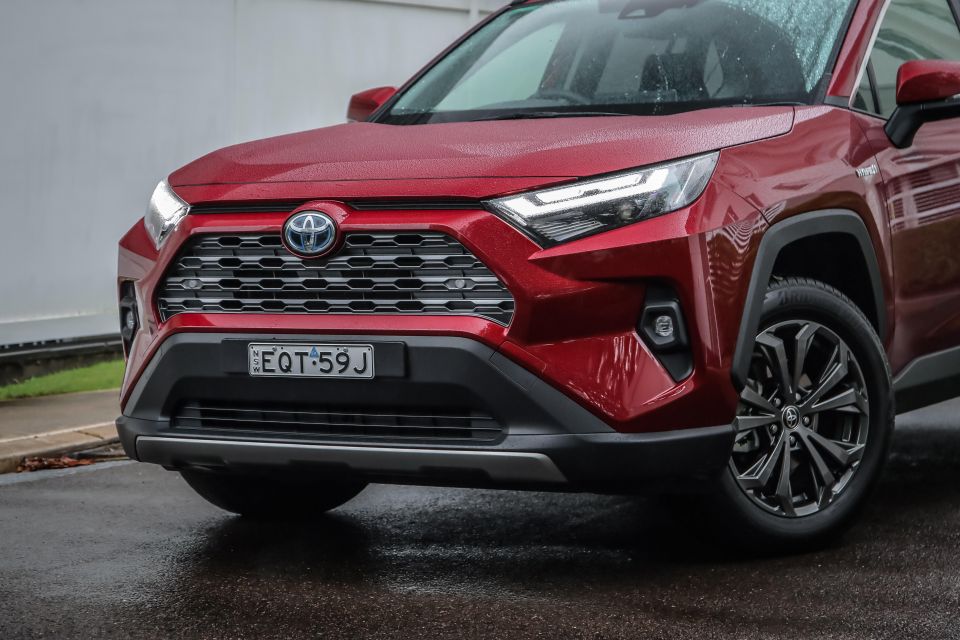
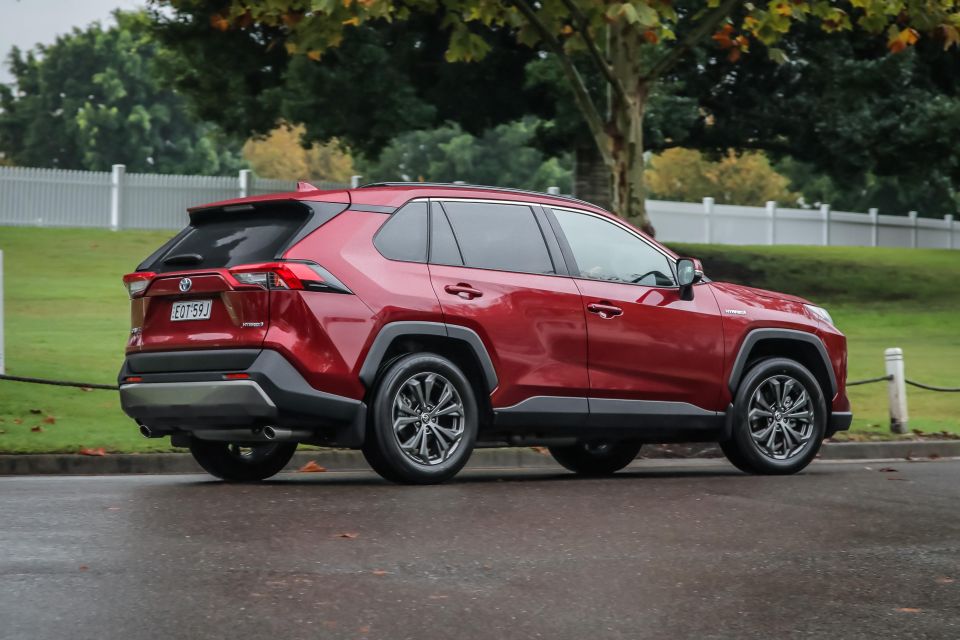

Quickly see how this car stacks up against its competition. Select any benchmark to see more details.
Where expert car reviews meet expert car buying – CarExpert gives you trusted advice, personalised service and real savings on your next new car.
Toyota’s updated 2022 RAV4 range is being rolled out to eager owners who’ve patiently waited.
There has been a well-documented roughly 12-month queue for delivery of the most popular SUV or passenger car in Australia.
For 2022 those patient buyers now have the choice of hybrid power across the whole range, some styling fiddling, and equipment tweaks across some variants. For greater details you can pour through the 2022 overview here.
Should you order a new RAV4 now though? A next-generation multimedia system – Toyota Connected Services, USB-C upgrades – and augmented safety features are due for rollout later this year. Logic suggests you order a RAV4 now, you should get the updated 2023 spec… eventually.

That said, on spotting the GXL Hybrid 2WD here on test, my neighbour remarked he’d just order that exact variant (in a different colour). The dealer quoted roughly ‘just’ a six month wait, which is good for him.
The question is whether he gets an MY22 (current multimedia) or MY23 (updated multimedia). The sad fact is probably just the luck of the draw, and Toyota’s state of supply that determines this.
With all of that said, we know the new RAV4 should drive just like the current car. Here’s how it stacks up.
The front-driven hybrid GXL clocks in at $40,450 before on-road costs. That’s $2500 up on the petrol-only version, and $3000 more affordable than the hybrid AWD.
Pricing is up a modest $125 on the older 2021-spec car. Premium paint adds $675. It’s unsure at this stage if the 2023 multimedia update, scheduled for release later this year, will command a price rise.
As one up from base trim, there are plenty of trim options above the GXL. In 2WD hybrid guise, the next-rung-up XSE adds $2800 ($43,250) to the price, and the Cruiser above that adds $5300 ($45,750).
At its price point, the key hybrid competition is Subaru Forester Hybrid L at $41,390. Choice expands greatly when cross-shopping petrol and diesel medium-SUV alternatives, with too many circa-$40k options to list here. Spending a little more – high $40,000 – opens up a number of other more expensive hybrid SUV choices.
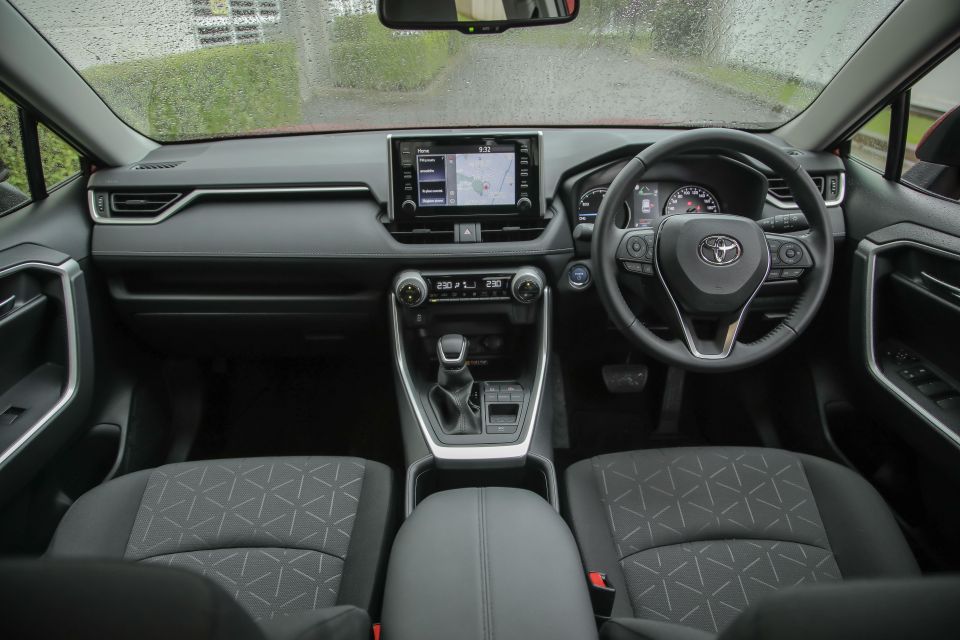
Having climbed into GXL straight out of the Cruiser Hybrid 2WD which sits two trim levels higher in range, I was expecting the lower-grade variant to feel noticeably more downmarket inside. I was pleasantly surprised otherwise.
The cloth trim and mechanical adjustment on the seats – compared with the electric leather Cruiser’s – is the most conspicuous difference, but the GXL’s pews and trim is actually quite pleasing.
In fact, I’d swear they’re slightly more comfortable in cushioning and support, even though they lack the lumbar adjustment found further up the RAV4 range.
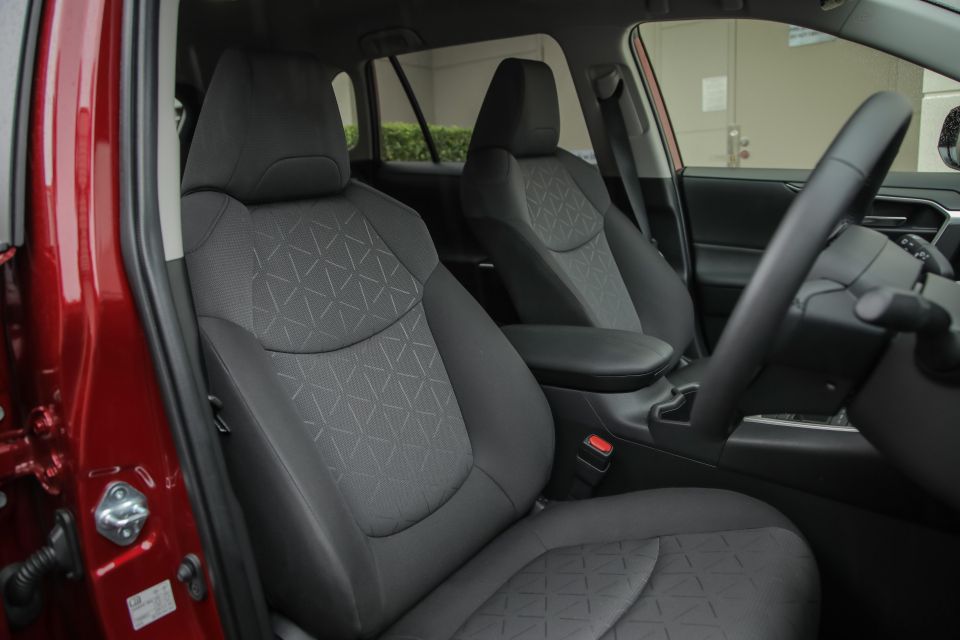
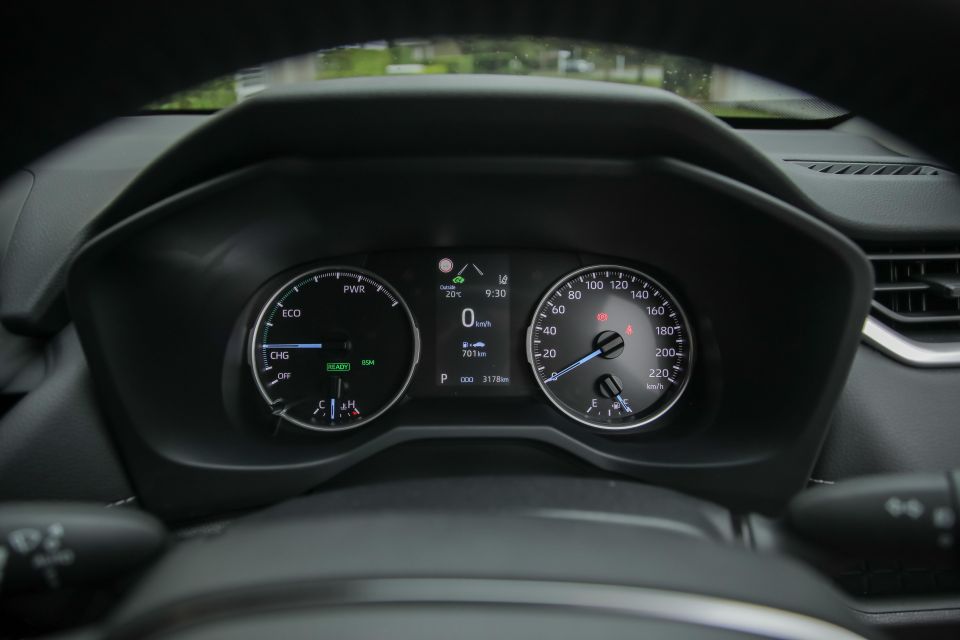
One smaller disparity is instrumentation. The GXL’s dual-analogue gauge design, with colour central 4.2-inch display in lieu of the semi-digital cluster featured in pricier variants, is really the only apparent spec-trimming. And yet it’s a rich, clear, and vibrant enough display in its own right.
In short, little about the GXL cabin feels miserly. It’s a little more economical in some areas you don’t notice so much, such as the hard-plastic upper door trims that are softer-touch leatherette in higher grades.
Yet it generally maintains a quality vibe where you need it most – rear air vents and dual USB-A ports for passengers – and where you notice it more, such as the stitched leatherette dash top. Basically, there’s goodness where it counts.
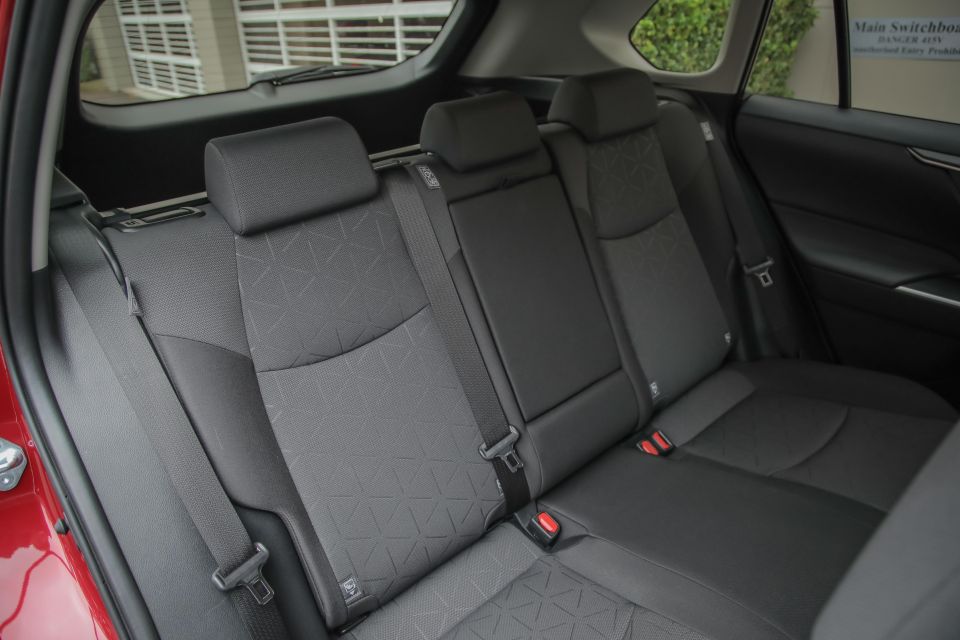
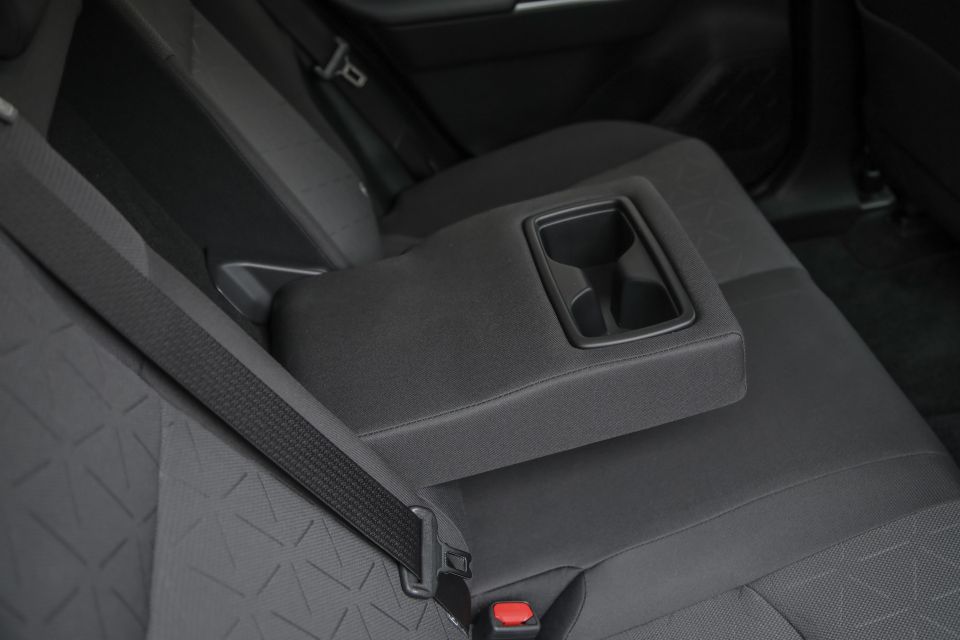

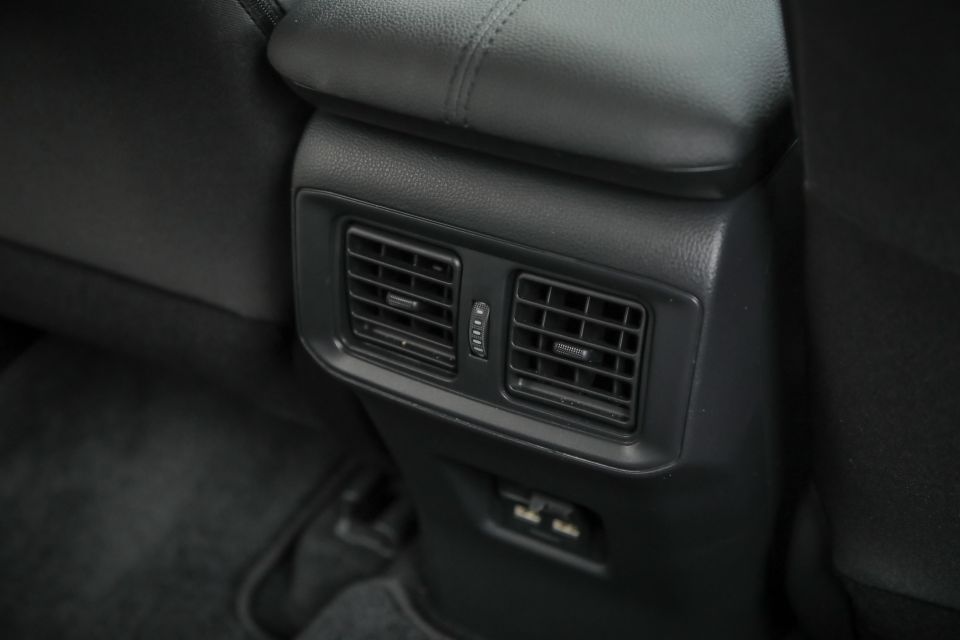
As we’ve praised before, the RAV4’s cabin is one of Toyota’s best.
There’s nothing too weird, quirky or overly low-rent, even if the dark grey and frosty silver scheme is a bit humdrum and predicable.
There’s also a bit of a bank vault vibe to the accommodation, a sense that occupancy is isolated via plenty of metal, glass and rubber. It’s not an S-Class Mercedes but it feels solidly-built, and the controls and switchgear all have a tactile feel and are nicely damped, with a specific shoutout to the neat rubber knurled air-con and audio dials.
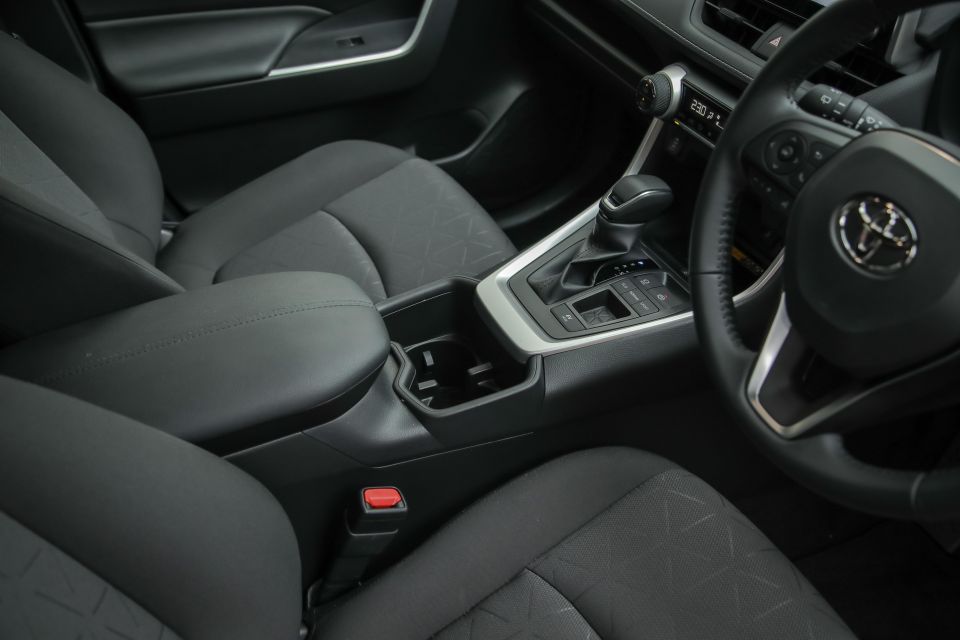
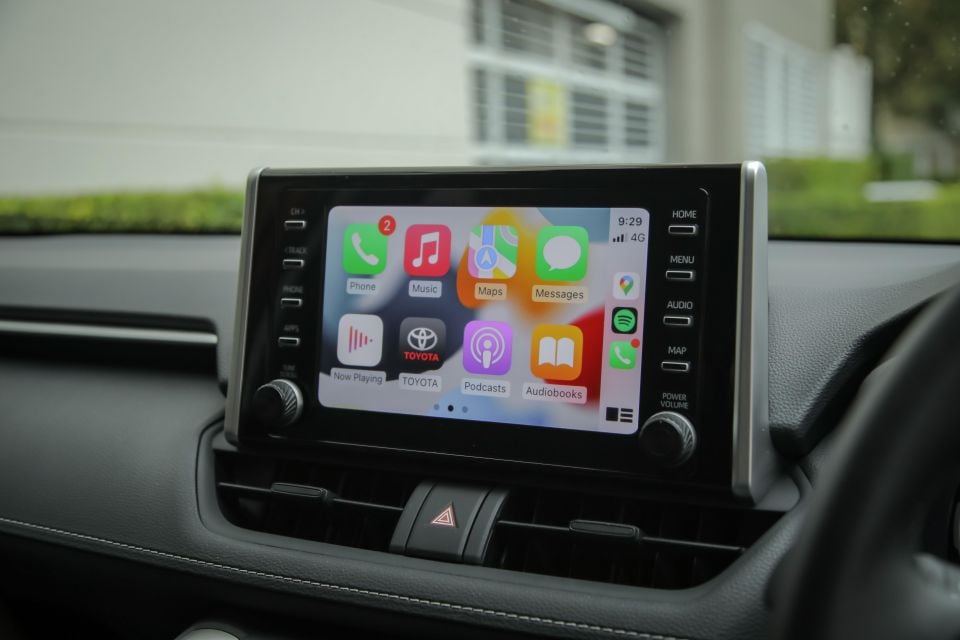
The only issue we found was a console lid with a rattle, and some of Toyota’s choices in button design is a bit dated.
The most dated cabin feature is easily the infotainment that continues to drag the aesthetic into yesteryear. Again, a major multimedia update is promised for later this year (in MY23 guise) and frankly it can’t come soon enough.
The 8.0-inch touchscreen system fitted remains as slow, clunky, and low in resolution as it has been for what seems like time eternal. It does offer DAB+, Bluetooth media streaming and smartphone mirroring, though Apple CarPlay takes a while to load up and the audio quality during phone calls leaves much to be desired. One bright spot is that you do get handy physical shortcut buttons and dials in the display frame.
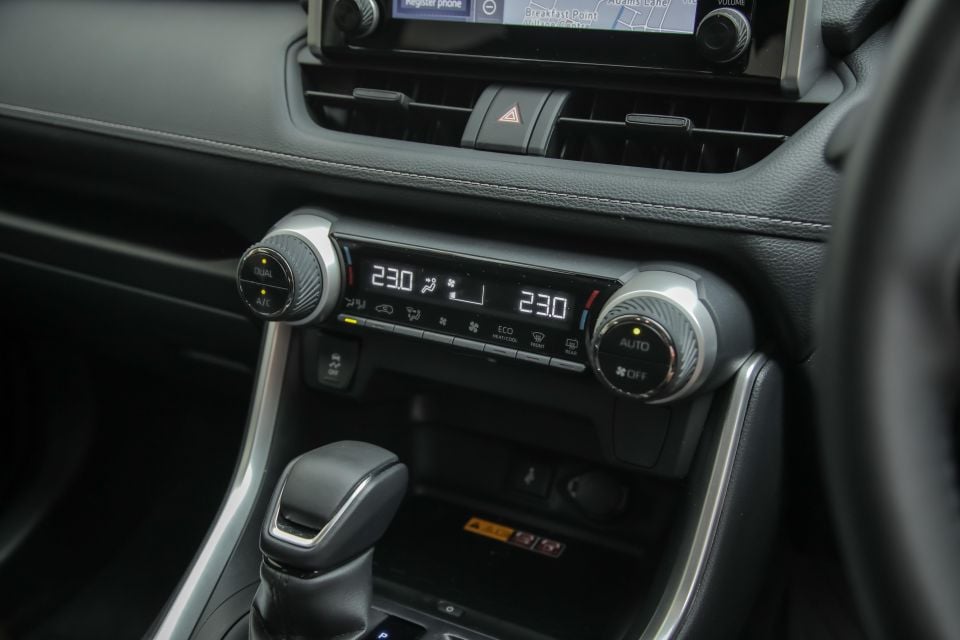
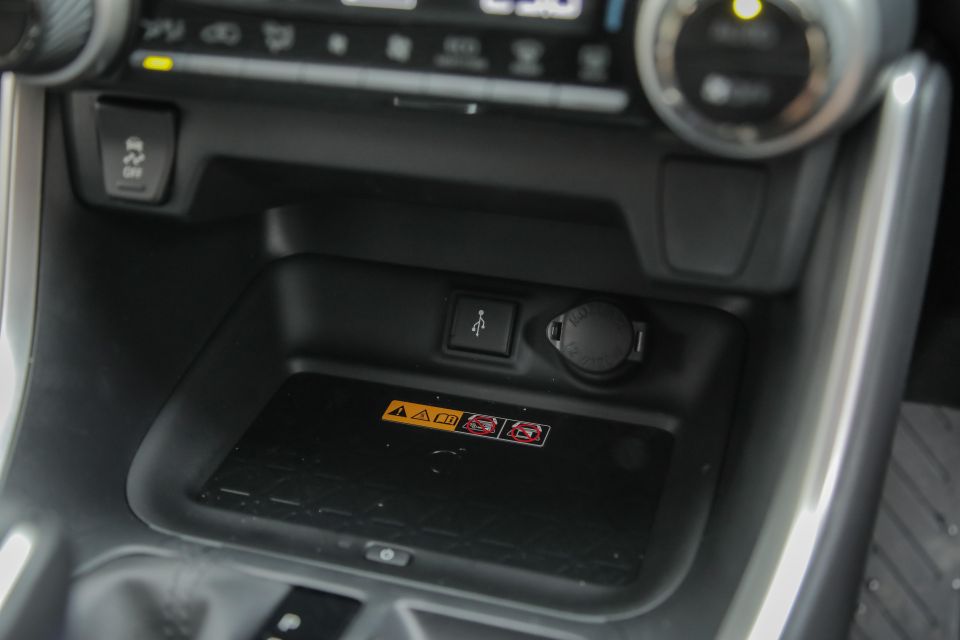
The wireless phone charging pad – large enough for most devices – is handy. And thankfully you can switch it off while you’re tethered to CarPlay or Android Auto which, of course, powers your phone anyway from a USB-A port that’s frankly a pain to access.
Otherwise there’s ample storage up front, including a shelf in the dash fascia and key cubby to the right of the driver, plus decently-sized console and door bins and large front cupholders.
Row-two room is excellent, with ample knee, head and shoulder room. And the seating is comfy, and offers ample support for longer trips.
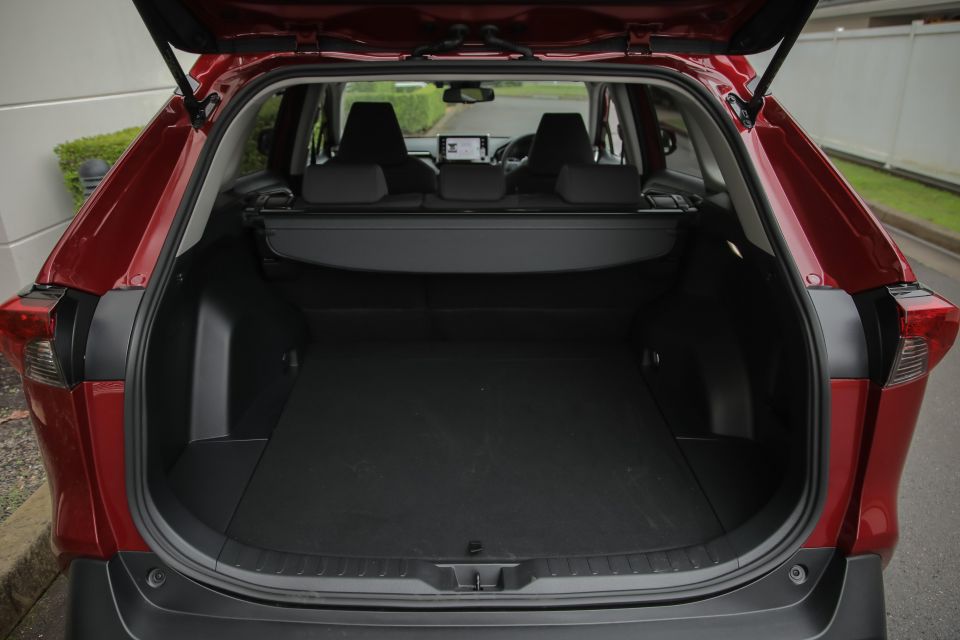
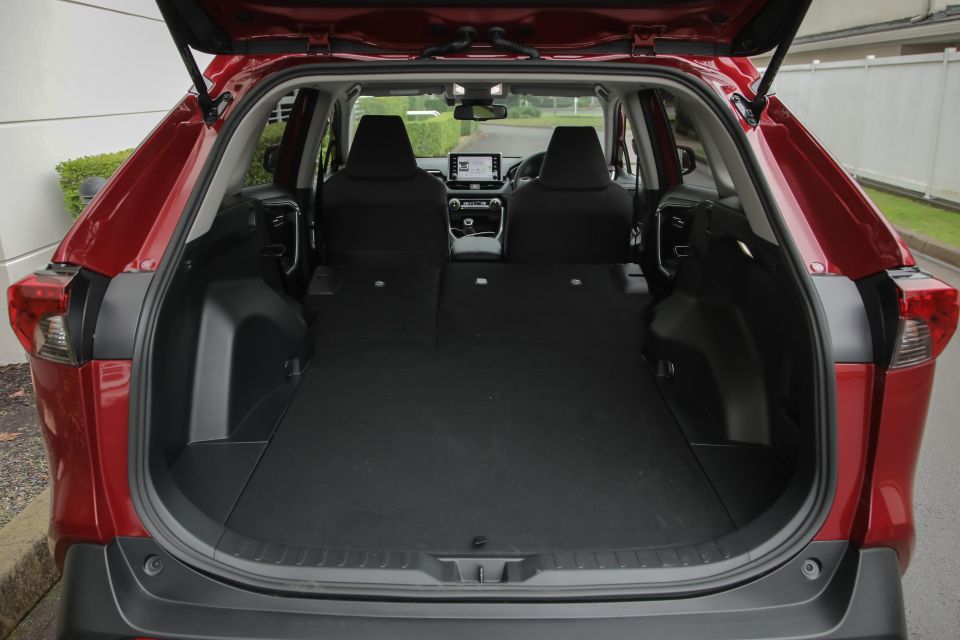
The aforementioned air vents and dual USB-A ports makes it rear passenger friendly no matter what their ages, and there are dual cupholders in the armrest when used as a four-seater.
There’s also ample clearance for easy baby capsule access and fitment, with ISOFIX mounts in the outboard positions.
The boot is a decent 580 litres advertised and there’s a handy dual-level floor feature to adjust luggage space to taste. The 60/40-split rear seat backs fold to provide a fairly flat load space, though Toyota doesn’t quote a figure for the expanded volume.

The front-driven hybrid system used in RAV4 comprises an Atkinson cycle 2.5-litre naturally-aspirated petrol four outputting 131kW and 221Nm as well as two electric motor-generators that contribute 88kW/202Nm via a nickel-metal-hydride battery pack.
Operating in tandem or individually depending on conditions and requirements, the total 160kW system output isn’t simply a case of adding peak petrol and electric outputs together. Indeed, torque is complicated enough Toyota doesn’t offer a peak claims at all.
The front-driver differs from the Hybrid AWD version in that the latter’s e-Four system adds a third electric motor with 40kW and 121Nm to the rear axle for what is a 163kW total. In either format, the front wheels are driven via a CVT transmission.

There’s scant electric-only range; the real benefit to Toyota’s hybrid formula is gains in fuel economy. The hybrid front driver brings a lean 4.7L/100km claim and, because of it, around a 1000km of potential range. The 2.5-litre petrol RAV4, in comparison, is quoted at 6.5L/100km, which is actually quite frugal by ICE measures.
And the benefits come without any requirement to plug the RAV4 into an electrical source to recharge. It also runs happily on 91 RON or E10 fuel.
The downside is in towing capacity, which is just 480kg braked or unbraked.

The front-driven hybrid RAV4 really comes together nicely on road. It’s not perfect, but there’s a long list of pluses that more than compensate for a few small shortcomings.
We’ve banged on forever about how nicely models based off Toyota’s TNGA platform drive. Indeed, when this (XA50) RAV4 arrived a few years back, it was a quantum leap beyond its forebear in balancing ride comfort and handling prowess. It still impresses today.
There are more engaging and characterful SUV drives in its segment. To be frank, that’s not a priority for many buyers. More importantly, the RAV4 shines where it matters against its competition, offering a kind of solid, quiet and comfy-riding blend that most owners want – and that’s superior to a good many of its rivals.
In general, the hybrid drive is pleasingly tranquil. It starts in electric mode and adopts that mode frequently for around-town driving, particularly at low speed where it brings its best efficiency and refinement.
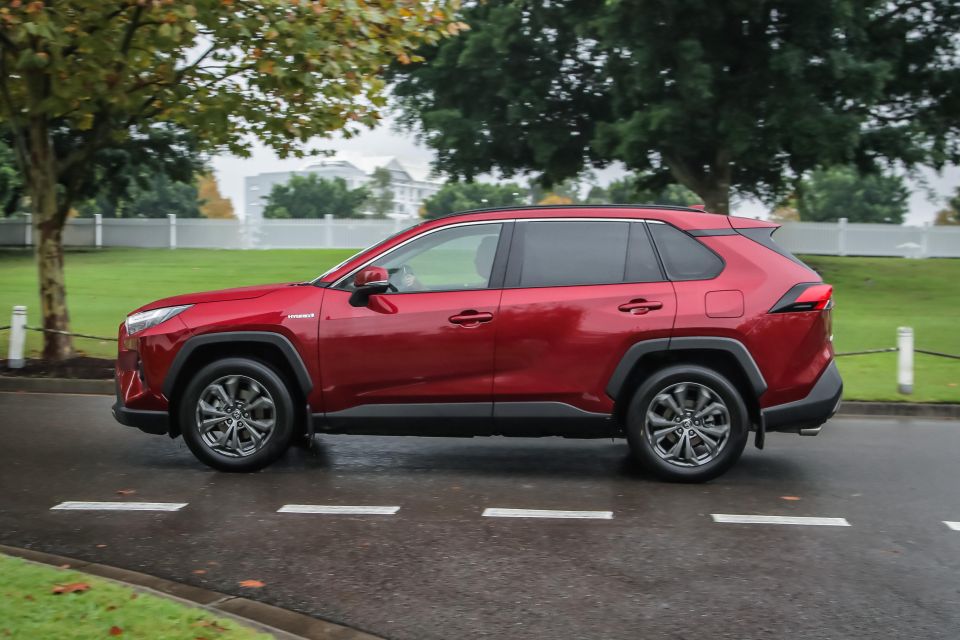
The petrol engine does chime in conspicuously and often, serving as primary drive. And the switching and blending of petrol-electric drive remain noticeable even if the general refinement in the current configuration is quieter and more polished than ever.
When the Atkinson cycle engine weighs in, it’s quite sombre on light throttle and isn’t exactly effortless when called to march. There’s a decent amount of total system torque, though the petrol component of the drivetrain is noticeably less raucous unladen compared to when you start adding loved ones and luggage.
Power and EV modes? Frankly, there’s little call for them. Toyota’s hybrids really pitch themselves as offering hassle-free turn-key benefits and it does a fine job sorting the hybrid system out without any fiddling.
The SUV does a good job of filtering out ambient and road noise on the move, be it around town or out on the motorway. There’s a real prestige in its manner when on the move and those new-look 18-inch alloys do improve ride comfort compared with the 19s fitted in some higher variants.
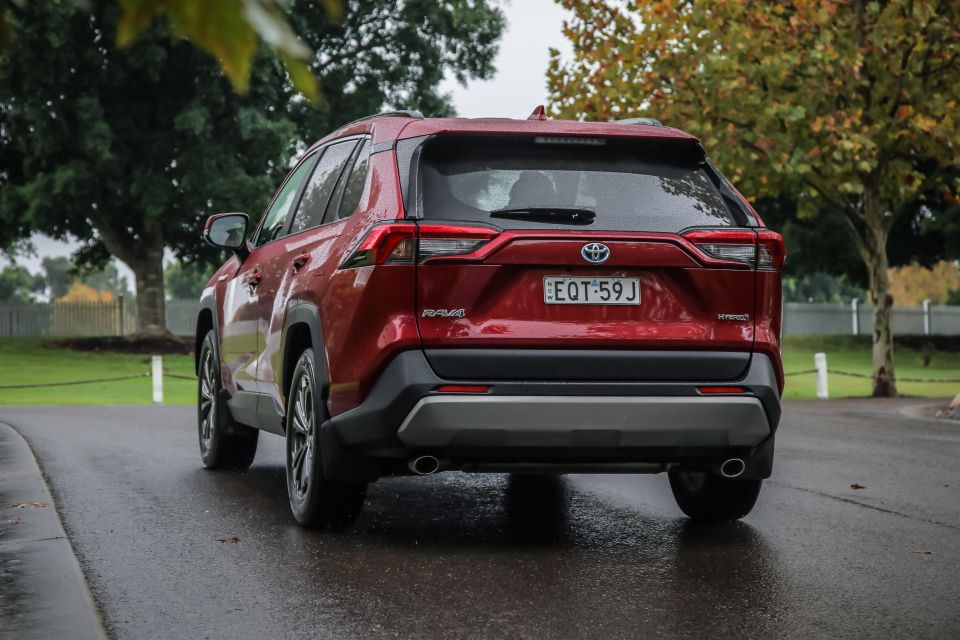
The ride is good, especially across rough or sharp road imperfections, yet there’s ample body control and driver engagement to bring a pleasingly cooperative experience. It’s not what you’d call fun, but the RAV4 remains sweet where the drive and occupants really need it most.
Is there a downside to foregoing all-wheel drive? Not really. Even during a wet spell in our week with the GXL front-driver, there were no traction issues, albeit on sealed surfaces. The AWD version might bring more surety if you’re regularly traversing broken surfaces and is perhaps, on balance, the shrewder choice for regional owners.
As for assistance systems, the parking sensors and fisheye reversing camera are handy enough to make parking a breeze. You don’t get the handy (Cruiser-spec) forward camera for tight spaces but this is really of little hinderance.
One pain; though, is that the lane departure warning system triggers at speeds below 50km/h, so it almost constantly chimes on back streets weaving between parked cars and road line-markings.


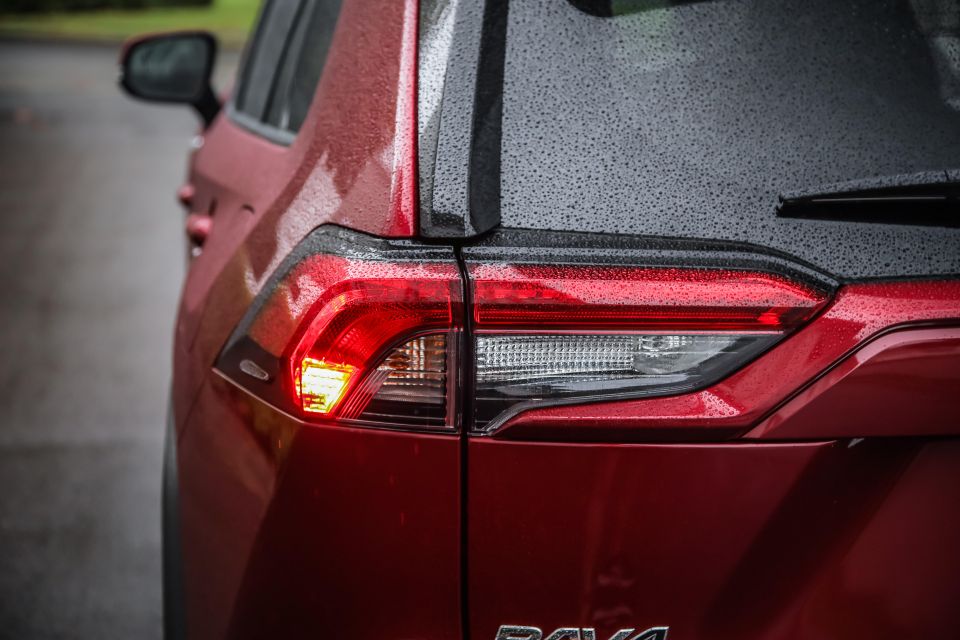
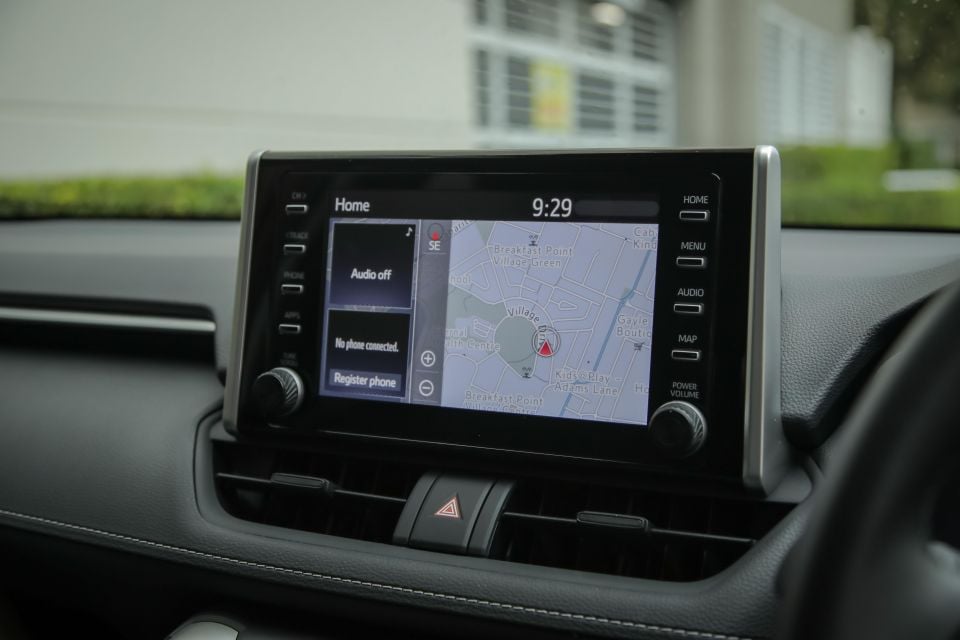
Where expert car reviews meet expert car buying – CarExpert gives you trusted advice, personalised service and real savings on your next new car.
While Toyota has fettled the RAV4 equipment up and down the range, 2022 updates for the GXL trim are fairly slim. You get a new design for the 18-inch alloy wheels and illuminated interior door switches.
Elsewhere, the GXL Hybrid trim highlights include:
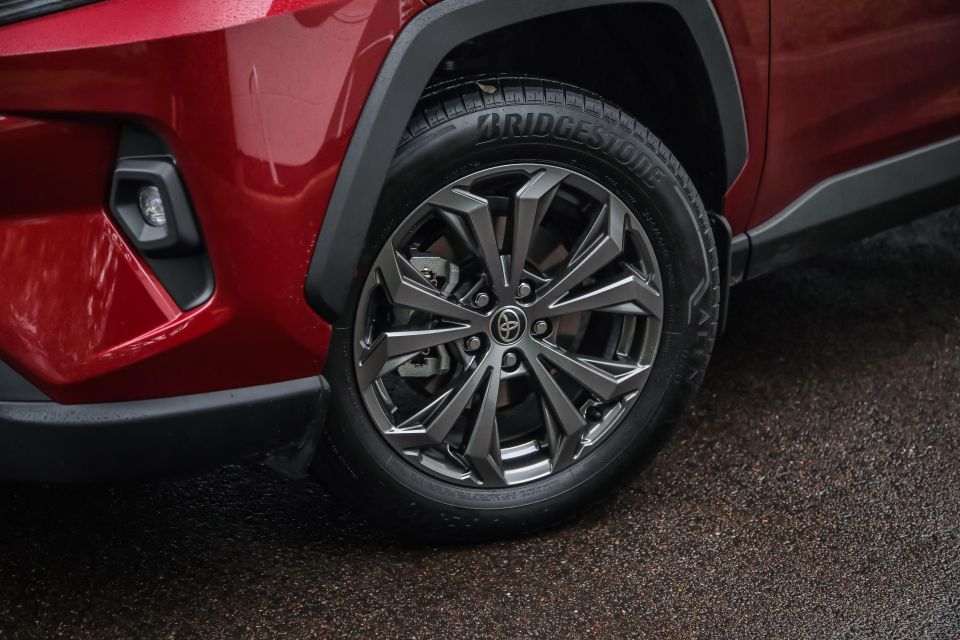

Features shared with lower-grade GX trim include:

The Toyota RAV4 wears a five-star ANCAP safety rating based on tests conducted in 2019.
It scored of 93 per cent for adult occupant protection, 89 per cent for child occupant protection, 85 per cent for vulnerable road user protection, and 83 per cent for safety assist.
The following safety features are standard across the range:
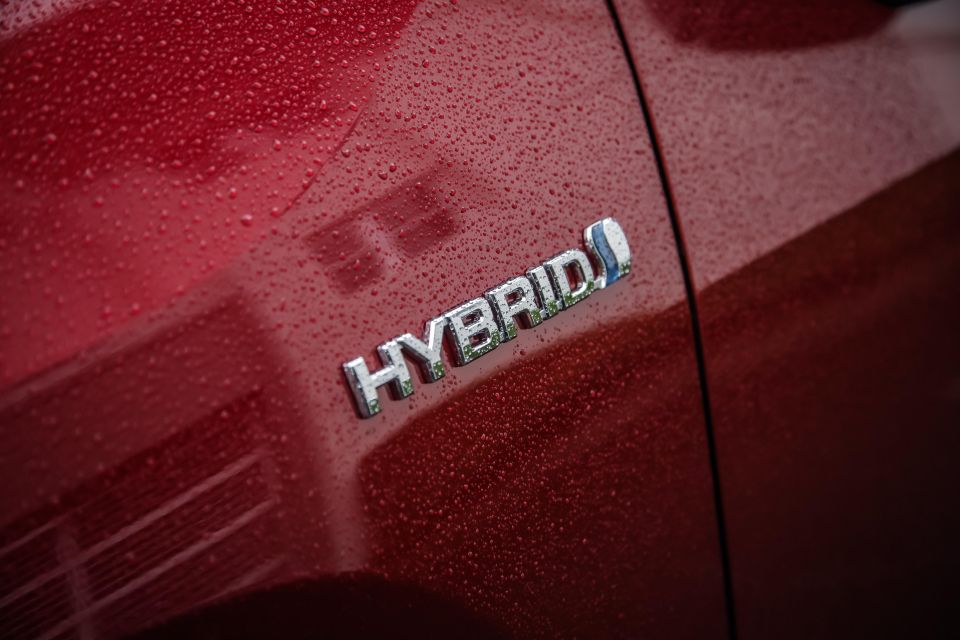
The RAV4 range is covered by Toyota’s five-year, unlimited-kilometre new vehicle warranty. The hybrid system’s battery is guaranteed for up to 10 years conditionally if regular servicing is maintained.
Service intervals are every 12 months and 15,000kms, whichever comes first. Each visit is capped at $230 for the first five years, which is amongst the thriftiest in its segment.
Real-world consumption is around 6.0 litres per 100km against its 4.7L claim. Of course, this is largely dependent on driving situations and conditions as the electric drive assistance is primary geared towards around-town driving. It runs on cheaper 91 RON or E10 to help fuel costs down.

The outrageous popularity of RAV4 is fully validated in its execution. Simply getting a hold of one during the much-publicised supply crunch is going to be tough.
Regardless, RAV4 in cost-savvy GXL Hybrid FWD guise comes highly recommended. It’s not quite the sweet spot the that pricier Cruiser trim represents, but at $5000 cheaper there’s some argument it offers a better value proposition because it doesn’t really lose niceties in meaningful areas.
Plus, there’s a new XSE trim on offer to split the difference on equipment.
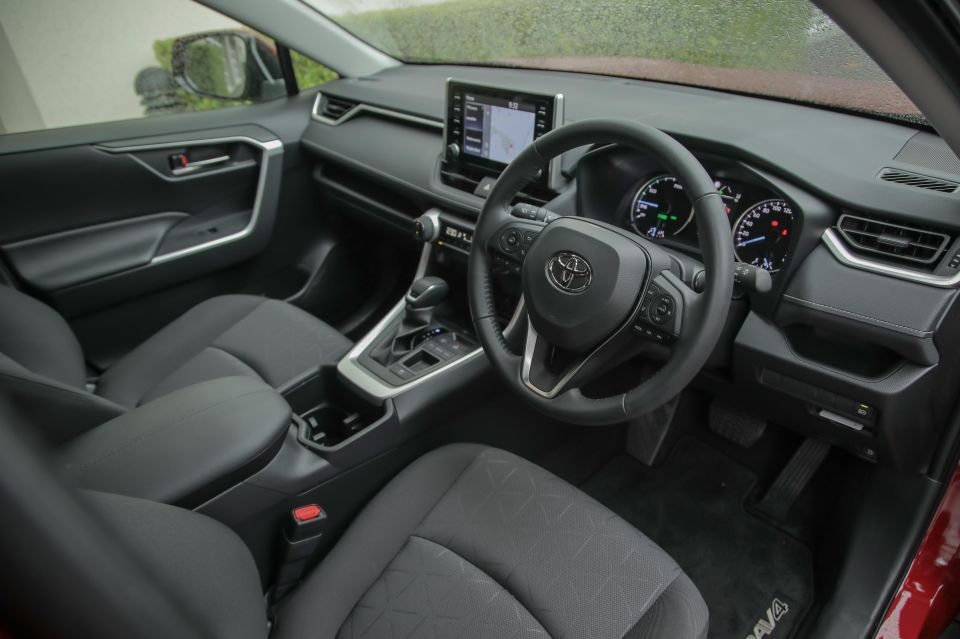
But in its own right, it’s a lot of SUV goodness for the GXL’s ask. And if past experience is anything to go by, it’s a helluva lot better and resolved than its key hybrid nemesis, the petrol-electric Subaru Forester L.
There are caveats to its lure. There’s not much new for MY22 and there’s a key multimedia update on the near horizon that (hopefully) should transform the infotainment experience. Then there’s the wait time on delivery, whichever way you go.
But negotiating a few humps will pay dividends in a quality family hauler that hits many of the right marks, whatever trimmings it comes with.
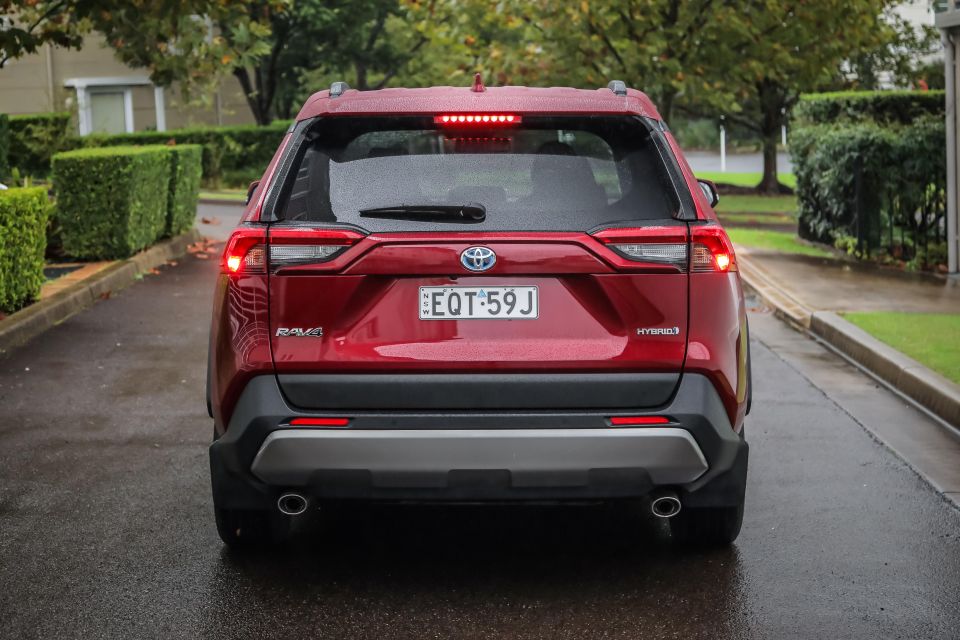
Click the images for the full gallery
MORE: Everything Toyota RAV4
Where expert car reviews meet expert car buying – CarExpert gives you trusted advice, personalised service and real savings on your next new car.


Max Davies
20 Days Ago


Andrew Maclean
8 Days Ago
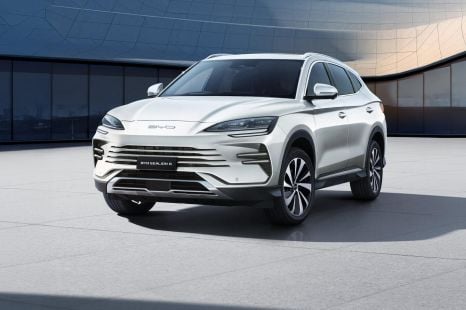

William Stopford
6 Days Ago


James Wong
5 Days Ago
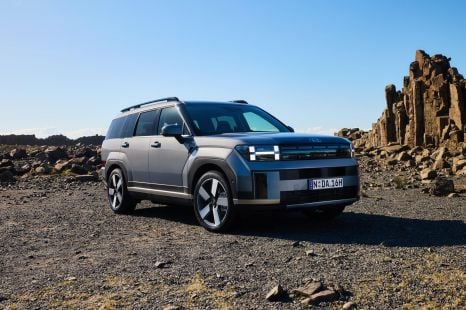

Damion Smy
4 Days Ago
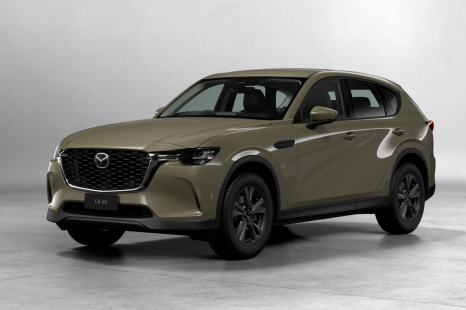

James Wong
3 Days Ago